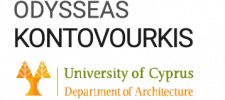
Timber Robotics
This research attempts to reconsider the role of advanced tools and their effective implementation in the field of Architecture, Engineering and Construction (AEC) through the concept of sustainable construction. In parallel, the paper aims to discuss and find common ground for communication between industrial and experimental processes guided by sustainable criteria, an area of investigation that is currently in the forefront of the research work conducted in our robotic construction laboratory. Within this frame, an ongoing work into the design, analysis and automated construction of a timber structure in actual scale is exemplified and used as a pilot study for further discussion. Specifically, the structure consists of superimposed layers of timber elements that are robotically cut and assembled together, formulating the overall structural system. In order to achieve a robust, reliable and economically feasible solution and to control the automated construction process, a multi-objective design optimization process using evolutionary principles is applied. Our purpose is to investigate possibilities for sustainable construction considering minimization of cost and material waste, and in parallel, discussing issues related to the environmental impact and the feasibility of solutions to be realized in actual scale.
Research, Department of Architecture, University of Cyprus
Research Team:
- O. Kontovourkis
- G. Tryfonos
- P. Konatzii
- S. Christofi
- C. Katsambas
- S. Stylianou
Publications
- Kontovourkis, O., 2017. Multi-objective design optimization and robotic fabrication towards sustainable construction – The example of a timber structure in actual scale. In A. Fioravanti, S. Cursi, S. Elahmar, S. Gargaro, G. Loffreda, G. Novembri, A. Trento, eds. Proceedings of the 35th Conference on Education in Computer Aided Architectural Design in Europe: ShoCK! – Sharing Computational Knowledge! (Volume 2). Rome: Sapienza University of Rome, pp. 125-134


